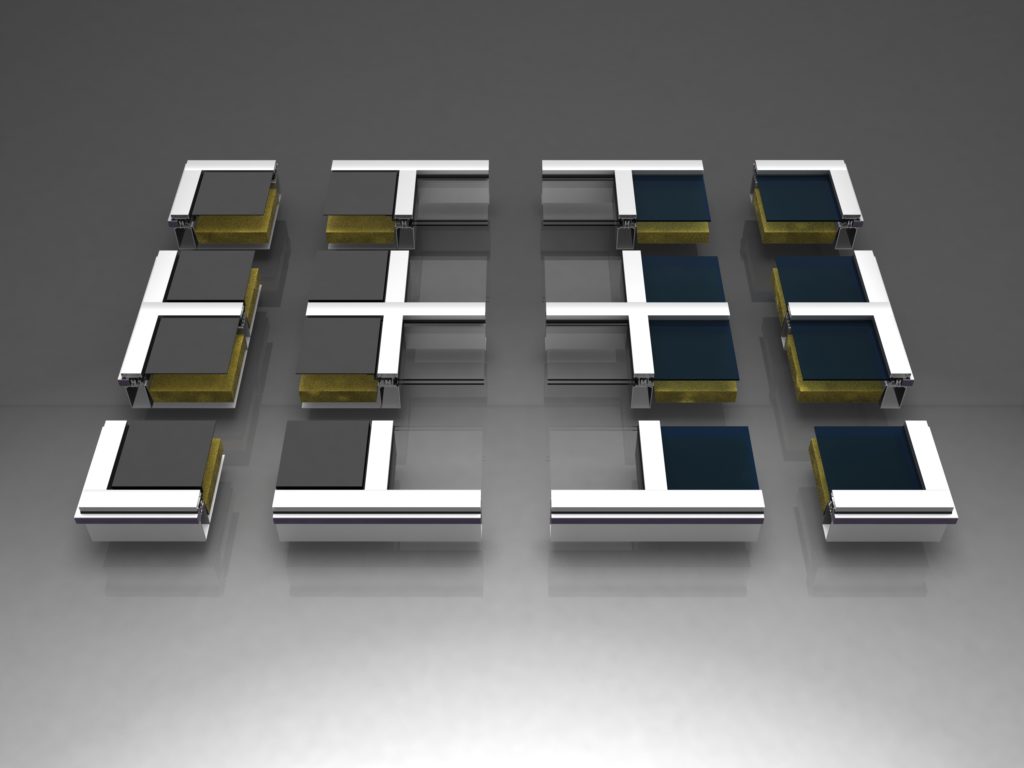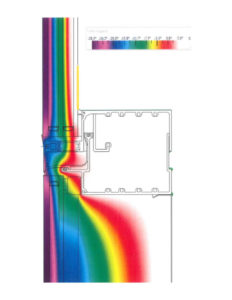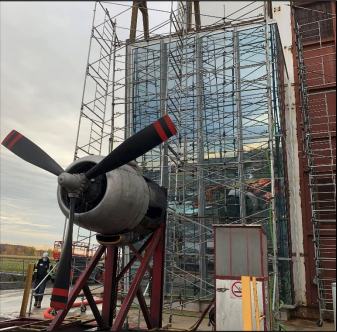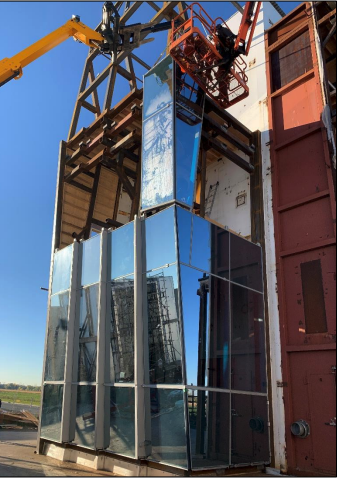What is a curtain wall?
In order to demystify what a curtain wall is, we called upon an expert on the matter at Epsylon, Simon Manucci, director of sales, who granted us a little interview. Here are his answers!
A curtain wall is a type of exterior cladding, usually in glass and aluminum, which offers maximum fenestration which is very efficient in terms of resistance to temperature, air, rain, condensation or any other weather.
At Epsylon, our curtain wall is prefabricated in our factory, and then installed on site. It’s made up of modules which are stacked, and which arrive at the site already ready with all the components, including the sealant. Once the module arrives on site, it is therefore ready to be installed quickly.
Otherwise, there is also the conventional curtain wall, which is used less on a large scale with us. This is manufactured but not assembled in the factory; and it will therefore be necessary to assemble it during installation on the site.
How is a curtain wall installed?
We often get asked how to install a curtain wall. So here are the explanations and a demonstration video.
There is someone on the floor upstairs, who operates machinery (crane or other) to be able to lift the module. It is a module that has been prefabricated in the factory, as explained previously.
They are going to assemble the curtain wall module first, and then they will bring it down again. They’re going to rotate it, because that’s the outer front part of the curtain wall that was facing them initially.
To protect everything, they put the glass up and then they change sides. Then, they come to embed the whole. These are male, female, left, right, top and bottom parts. So they put the module in place, then lower it to nest it in the one below. Then they move on to the next module. Here’s the video showing a visual of this installation.
What is the difference between a curtain wall and a window wall?
The window wall
A distinction must be made between the curtain wall and the window wall.
The window wall is a window that is installed between two slabs. It is therefore glass that is installed between two slabs, then it is sealed all around, with a sealant to make it watertight.
The curtain wall
The curtain wall, on the other hand, is installed in front of the concrete slabs, and therefore offers a building envelope that is more waterproof, continuous and uniform than the window wall. This is a feature highly appreciated by architects as much for its technical performance as for its architectural qualities!
The curtain wall system, with prefabricated modules as we offer at Epsylon, has the particular characteristic of having the pressure balanced. This means that our system has air inlets and outlets, as well as dripping water.
The big advantage is that when there is water entering the caps of the system, the water will drip out, and the air will also circulate to dry out the spandrels.

The thermal performance of the curtain wall
Due to climatic conditions in North America, Epsylon only offers the curtain wall with balanced pressure.
With the curtain wall, we also talk about thermal performance, with the choice of glasses and low-e. The low-e is a metallic film which is applied to the glass. The latter offers better thermal performance and also allows you to play with the brightness that enters from the outside to the inside. By the way, there are shading coefficients. The more light is present, the more there will be thermal gains in the building. Several variations of these aspects are therefore possible.
Epsylon curtain walls are subjected to thermal simulations which are carried out by specialized firms. The simulations are made with glass, aluminum, stone and other options, depending on the particular design of the project. These simulations are made to verify if the characteristics meet the required thermal requirements of the customer.

The spandrel parts: a world of possibilities for architects!
The spandrel parts of the curtain wall are those which are opposite to the concrete slab. So the big glass section is vision glass, where people in the building will see from the inside out, and the spandrels are where people can’t see because it’s the floor, ceiling or walls.
The spandrels are the parts where architects can be creative. For example, they will be able to use materials such as aluminum, single or double glass, or even play with other components such as stone, fiber cement components, etc.
So the curtain wall brings a lot of architectural versatility because it is possible to integrate several materials. Architects can play with glasses, with soffits. In terms of geometry, there is also a lot of flexibility.
How to estimate the price of a curtain wall?
It is possible to estimate the price of a curtain wall with a minimum of information. The first information to have is that of the dimensions.
It also takes the frame of the building. By knowing the width of the glass, the height and the number of floors, we are able to determine a price per square foot in relation to certain minimum parameters such as widths, heights and the type of glass used.
We must also have information on some characteristics, for example, it is a double glass or a triple glass? There may also be spandrels with simple glass.
Once we have all of these parameters, we are able to give a budget price to the client quickly enough so that they know if they are within their budgets with their current design.
Evaluate the quality of a curtain wall
At Epsylon, we often go to an independent laboratory to test our system and make sure it meets all applicable standards. We pass the tests to limit air infiltration, to control steam, to prevent the penetration of rain and condensation inside, etc.
Condensation testing is the primary way in our business to assess the build quality and installation of our curtain wall. We get tested in a real situation (in situ) in a laboratory. For these tests, a full-size curtain wall sample is fabricated. Next, airplane engines are used to recreate the wind factor then we put water in front of the sample, and we test our curtain wall to be sure that the water is repelled and expelled effectively.
Then, we have structural tests: we will move the inside of the curtain wall with fairly pronounced movements, to ensure that we meet the standards in terms of inflections.
These tests ensure that the quality of our product is very good!

